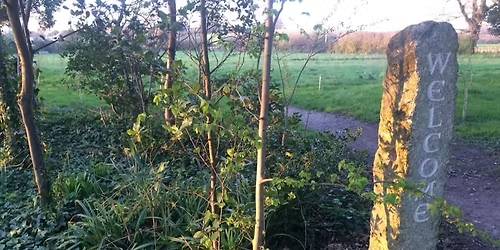 CCEH Seminar Series - Autumn Term 2025
CCEH Seminar Series - Autumn Term 2025About this Event
Please join us in the Centre for our final seminar of the year 'She/He/It: Ambiguity and Certainty in the Sexing and Gendering of the Dead Foetal Being' by Aimee Middlemiss, a Wellcome funded Research Fellow based in the Centre for Cultures and Environments of Health here at Exeter.
The seminar will be held in the CCEH Boardroom and online, 10th December, 13.00 – 14.00.
For those joining in-person there will be tea, coffee, and biscuits in the CCEH library space after the seminar.
Seminar Abstract:
This is seminar is a work-in-progress paper based on Aimee's PhD data on women’s experiences of second trimester pregnancy loss including forms of miscarriage and termination for foetal anomaly.
In the paper, I consider how foetal beings which have died or will die are produced as forms of person through sexing and gendering their bodies. In the second trimester, the foetal body is usually substantial, and sex organs may be recognisable. Sexing from anatomical morphology may have happened during pregnancy through ultrasound sonography, or it may be possible after birth, when the dead foetal body is often encountered. Alternatively, prenatal diagnosis techniques such as amniocentesis and postnatal post-mortem investigation can result in chromosomal sexing. Evidence of the sex of the foetal body can be used by families, medical professionals, and sometimes state civil registration processes to produce foetal gender in practices such as naming or pronoun use. For some families, definitive sexing is very important in asserting the personhood of their baby through associated gendering. Lack of definitive sex, or conflicting diagnoses, can be problematic in such cases. At the same time, for other families gender can be produced without a sex diagnosis, or in some cases sexing and gendering the foetal being can be inappropriate, even where degrees of personhood are attributed. Sex and gender are therefore sufficient but not necessary conditions for personhood in the English context. They function, potentially separately, to produce the foetal being as more of a person. These findings challenge binary conceptualisations of foetal personhood, and add nuance to the role of the pre-existing human body in English personhood (Strathern 1992). Furthermore, the circumstances of the sexed and gendered foetal person dying before they can agentially engage with their own categorisations shows whilst person-making processes are social and relational, the agency of the person to whom they are applied is not the salient factor. Sex, and gender, are externally applied social definitions in this context, challenging the model of English personhood in which the pre-existing body defines the person, and relationality is overlaid on it. The paper therefore complicates understandings of what makes a person in the English context, and has implications for biomedical and social practices which seek to establish certainty in sexing the dead foetal body.
Event Venue
University of Exeter Queen's Building, The Queen's Drive, Exeter, United Kingdom
USD 0.00












